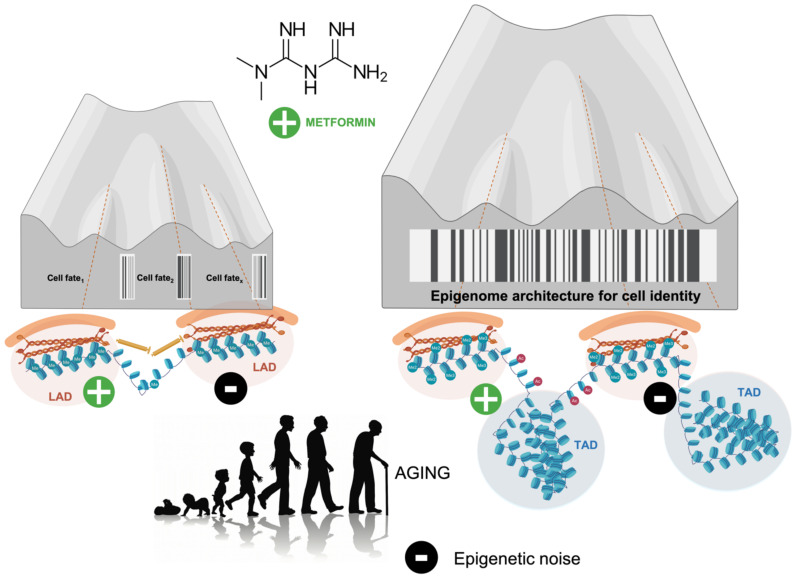Figure 3.
Metformin-regulated noise in the aging epigenetic landscape. Beyond the deterministic model depicted in Figure 2, one should acknowledge that transition states and cell fate decision at branching points of Waddington’s landscape can take place in a discontinuous stochastic manner in which aging noise modulate the probability of transition events. Crucially, the changing deepness and tallness of the valleys and hills can be governed, at least in part, by changes in the three-dimensional (3D) topology of the (epi)genome including lamina-associated domains (LADs) at the nuclear periphery and promoter–enhancer contacts regulating gene expression within topologically-associated domains (TADs) in the nucleus; such structures, which are continually responding to intra- and extracellular cues during development, differentiation, and tissue homeostasis, affects the contour of the epigenetic landscape itself to modulate the effects of noise [16,17,18,19]. Although unproven, the ability of metformin to regulate the 3D shaping of chromatin topology via maintenance of TADs and LADs would favor a physiological/reparative resolution in response to decreased signal-to-noise ratios in cells/tissues undergoing a smoothing of the epigenetic landscape. Perhaps more importantly, the targeting of the cross-talk between (epi)genomic organizers with metformin might provide key mechanistic insights into 4-dimensional (4D) regulatory changes in (epi)genome architecture, where the 4th dimension is aging time.

